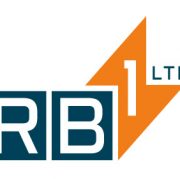Electrical Bypass vs. Manual Bypass: Which One Is Best for Your Setup?
When planning your facility’s power continuity strategy, choosing between a manual bypass and an automatic electrical bypass can feel like a difficult decision. Each option comes with its own advantages, costs, and ideal applications.
At RB1, we work with businesses across the UK to design and install bypass systems that keep operations running smoothly, safely, and in line with BS EN 61439 standards.
In this article, we’ll compare manual bypasses and automatic electrical bypasses, so you can make an informed decision about which is best for your setup.
What Is a Manual Bypass?
A manual bypass is a system where an operator physically switches power around the main system or equipment during maintenance or in the event of a fault.
✅ Advantages of Manual Bypasses:
- Lower upfront cost – More affordable than automated solutions.
- Simple design – Easy to operate and maintain.
- Suitable for smaller facilities – Works well in non-critical applications.
⚠️ Limitations of Manual Bypasses:
- Relies on human intervention – If staff aren’t available, downtime may be extended.
- Not suitable for critical systems – Even short outages can be costly.
- Higher risk of operator error – Manual handling can introduce safety risks.
👉 Best for: Small commercial facilities or non-critical industrial systems where planned downtime is acceptable.
What Is an Automatic Electrical Bypass?
An automatic electrical bypass switches power instantly when maintenance is needed or a fault is detected. This ensures a seamless power supply with little to no interruption.
✅ Advantages of Automatic Bypasses:
- No downtime – Power switching happens instantly, avoiding outages.
- Improved safety – Reduces reliance on human operators.
- Essential for sensitive equipment – Protects data centres, hospitals, and manufacturing plants.
⚠️ Limitations of Automatic Bypasses:
- Higher upfront cost – Requires investment in advanced technology.
- More complex system – Needs professional installation and maintenance.
👉 Best for: Critical infrastructure, data centres, hospitals, and industrial plants where uptime is essential.
Key Differences at a Glance
| Feature | Manual Bypass | Automatic Electrical Bypass |
|---|---|---|
| Operation | Operator manually switches power | Power is switched automatically |
| Cost | Lower | Higher |
| Speed | Minutes (depends on operator) | Instant (milliseconds) |
| Reliability | Dependent on staff availability | Seamless and consistent |
| Best Use | Small or non-critical systems | Mission-critical operations |
Which One Is Right for Your Facility?
When deciding between a manual or automatic bypass, consider:
- Criticality of Operations – Can your facility tolerate downtime, or must it run 24/7?
- Budget – Manual systems cost less, but downtime can cost more in the long run.
- Compliance – Automatic systems are often preferred for industries with strict safety requirements.
- Staffing – Manual systems require trained personnel, while automatic systems reduce operator dependence.
At RB1, we help UK businesses choose the right bypass for their specific needs—balancing cost, safety, and operational efficiency.
FAQs: Manual vs. Automatic Electrical Bypasses
Q1: Is an automatic bypass worth the extra cost?
A1: For critical operations like data centres, hospitals, or large factories, the cost of downtime is far greater than the investment in an automatic bypass.
Q2: Can I upgrade from a manual to an automatic bypass later?
A2: Yes. RB1 can retrofit systems to provide automatic functionality if your facility grows or requires higher resilience.
Q3: Do both types of bypasses comply with UK standards?
A3: Yes, as long as they’re manufactured to BS EN 61439 standards. All RB1 bypass systems meet or exceed UK compliance requirements.
Conclusion
Both manual bypasses and automatic electrical bypasses have their place in UK industry.
- A manual bypass is cost-effective for small, non-critical setups.
- An automatic bypass provides seamless protection for mission-critical operations.
At RB1, we can assess your facility’s needs and recommend the right bypass solution—ensuring safety, compliance, and long-term efficiency.
Contact us today to discuss whether a manual or automatic bypass is right for your business.

Leave a Reply
Want to join the discussion?Feel free to contribute!